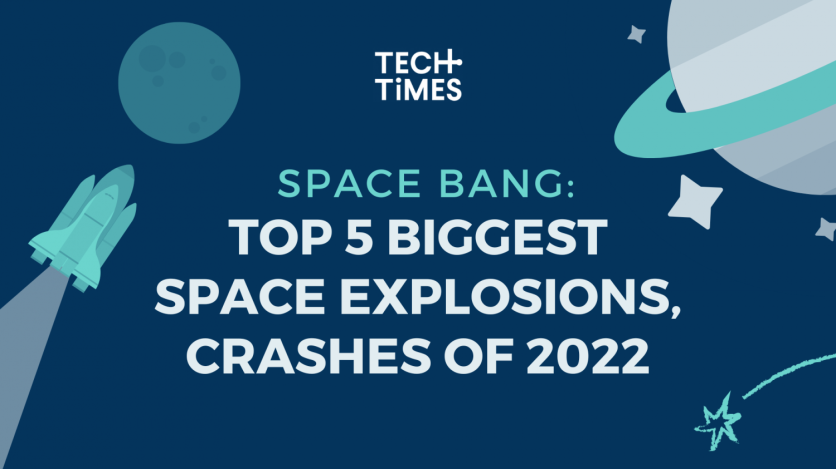
Here's a look back at the biggest space explosions and crashes in this year's collection of cosmic events.
Although it may seem impossible to completely learn everything in outer space due to the vastness of the universe, that does not mean that we should not try.
We can now discover a lot more of the universe than we ever believed conceivable, all thanks to the quick growth of technology over the past century. To celebrate the discoveries and events we have witnessed in space, here are our top five personal picks of this year's space explosions and crashes in no particular order.
NASA's Asteroid Crash
According to NASA's results, their asteroid-moving experiment this year was a huge success. The project, known as the Double Asteroid Redirection Test, or DART, was humanity's initial attempt to nudge a celestial object deliberately.
The mission was an experiment to see how humanity could change the trajectory of a dangerous asteroid, should one ever be on a crash track with our planet. The rocky target, Dimorphos, however, is not a threat to Earth.
A tail was created tens of thousands of miles long by the collision, which launched about 2 million tons of rock into space. Fortunately, the experiment proved successful as the hit greatly shortened Dimorphos' orbit around its parent asteroid, Didymos.
A Giant Supernova Explosion
Another one of this year's cosmic events was when NASA discovered a supernova explosion.
Back in May, the Hubble Space Telescope discovered evidence in May that a star can survive the supernova explosion of its companion star, with which it once orbited. This is due to the recent cosmic event called "supernova 2013ge", where a star explosion jostled but spared its nearest partner.
However, astronomers have been using the Hubble to look for hints and test theories to explain these stripped supernovae since the reason for the hydrogen loss still remains a mystery.
A Neutron Star Collision
On April 25, 2019, the LIGO Virgo Network reports that their Livingston Observatory discovered what looked to be gravitational waves from the collision of two neutron stars.
The European Virgo detector and the National Science Foundation-funded Laser Interferometer Gravitational-wave Observatory (LIGO). A recent investigation has confirmed that this event was probably caused by the merger of two neutron stars. This kind of occurrence has only been detected in gravitational waves twice prior to this one.
Read Also : NASA's Hubble Space Telescope Captures a Strange Astronomical Explosion Surrounding a Young Star
A Rocket to the Moon
The space event is what the title entails. NASA's Lunar Reconnaissance Orbiter found an interesting rocket accident in early March on the far side of the moon. However, what makes the impact interesting is the creation of a twin crater, which NASA had not anticipated.
NASA released images of the violent hit in June, which left a twin crater, a 19.5-yard crater that overlapped with a 17.5-yard crater as a result of the explosion.
Interestingly, astronomers theorize that a misplaced rocket booster had collided with the moon, marking the first documented instance of space debris accidentally striking our natural satellite.
Mars Impact Creates New Crater
This year, NASA's Mars Reconnaissance Orbiter, which has been circling the red desert planet for 15 years, captured an incredible photograph of the Martian surface: a brand-new crater over 500 feet across and about 70 feet deep.
NASA's geologic detective InSight lander first picked up the Marsquake in late 2021. The 2022 scan then showed significant subterranean resources on Mars as proof that the planet is far from dead.
Related Articles : NASA's Hubble Space Telescope Captures a Bright Star Hours After its Supernova Explosion

ⓒ 2026 TECHTIMES.com All rights reserved. Do not reproduce without permission.




